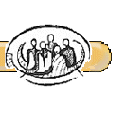

|
Abstract: An image that reduces a subject to its essential visual elements, such as lines, shapes, and colours.
|
Cubism: An influential, 20th-century style developed by Pablo Picasso and Georges Braque, based on the simultaneous presentation of multiple points of view.
Design: An organized arrangement of one or more visual elements, principles or materials for a purpose. Drawing: Sketch, design, or representation by lines. Drawings are usually made on paper with pen, pencil, charcoal, pastel, chalk, and the like. Earth Colors: Pigments, such as yellow ochre and umber, that are obtained by mining: usually compounds of metals. Form: An element of art and design that pertains to an actual or implied 3-D shape of an object or image. In a broader sense, form refers to the total physical characteristics of an object, event or situation. Gallery: A room, series of rooms, or building devoted to the exhibition and often the sale of works of art. Graphics: Collective term for printmaking processes such as photography, silk-screening, monoprinting, and lift printing. Historic site: a place that is pertaining to, or characteristic of history or past events. Illustration: A picture designed to elucidate and decorate a story, poem, or other piece of writing. Impressionism: An art style developed in the 19th century, characterized by broken colour and soft edges. Landscape: A view of the scenery on land, often used as subject matter in art. Layouts: Sketches of rough ideas or compositional plans for a work of art. Line: An element of art and design that pertains to the narrow mark or path of a moving point on a surface. Medium: The material with which an artist works, such as marble, oil paint, terra-cotta, and watercolour. Mosaic: A picture composed of many small, separate pieces of materials such as clay, glass, marble, and paper, which are fastened to a background. |
 |
 |
 |
 |
 |
 |
| Gallery | Tour | Family | Writing | Current Issues | Team |
|